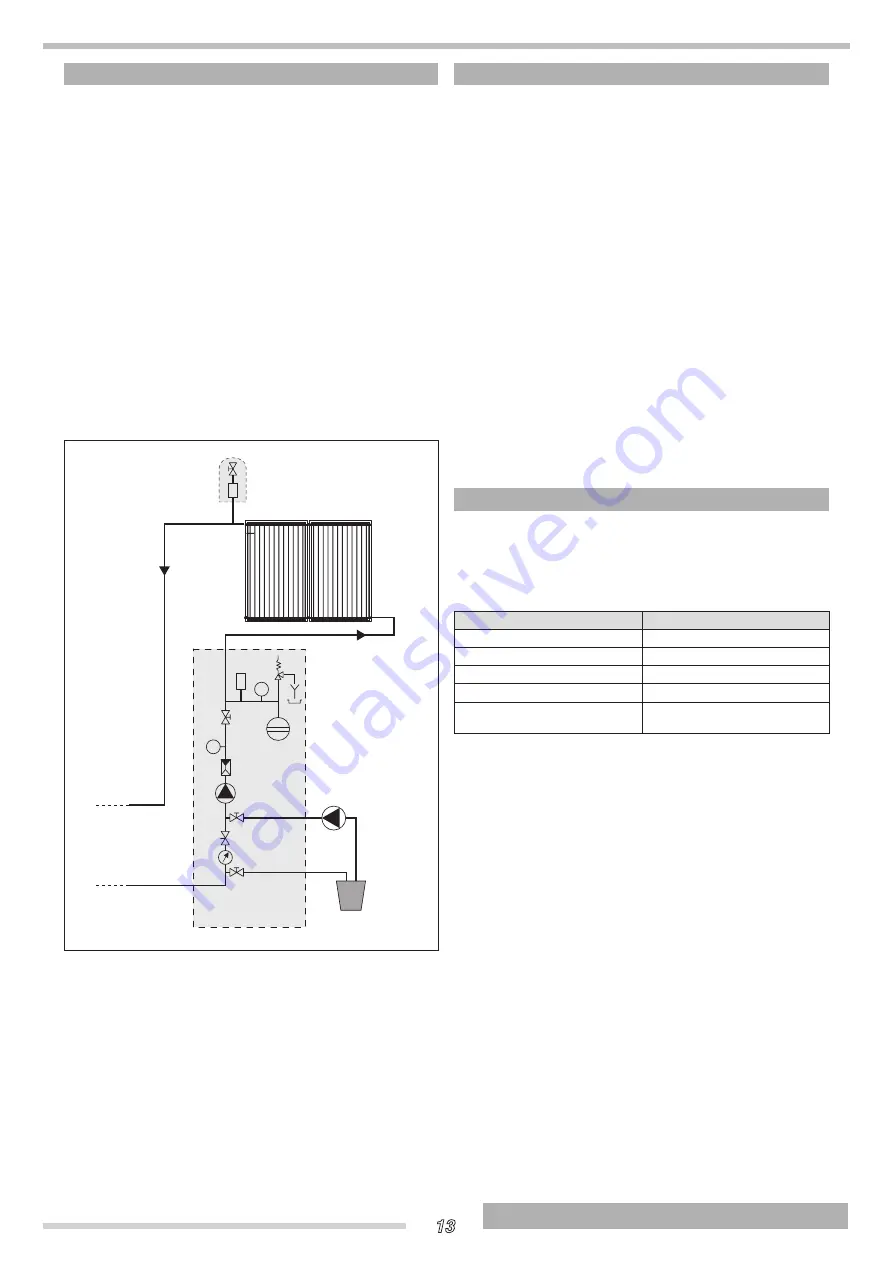
13
ENGLISH
INSTALLATION
INSTALLATION
FILLING AND EMPTYING
Before system commissioning it is necessary to wash and fill it.
Solar collectors are exposed to the risk of frost during winter,
as they are installed outdoor. Moreover, they can reach high
temperatures in stagnation conditions, consider these things
when choosing the heat transfer fluid.
b
If copper piping has been used and joints have been hot
brazed, flush out the system to remove any brazing res-
idues. Seal test the system after you have flushed it out.
Fill the solar collector with glycol/water mix immediately
after flushing it out, because flushing water may remain
trapped in the circuit (with a consequent risk of freezing).
b
For system washing, filling and emptying, follow the in-
structions contained in the manual of the matched solar
station.
b
Filling, emptying and venting must be carried out with
collectors at ambient temperature and protected from
solar radiation.
A
7
°C
Manual
bleed valve
(accessory)
Anti-freez mix
Heat exchanger
of solar
Solar collector
Heat
transfer fluid
filling pump
Water control system
R
M
M
T
DEVICE CLEANING AND MAINTENANCE
b
The following operations must be exclusively performed
by Technical Assistance Centre
It is recommended to clean the glass once a year, as the de-
posit of dust and leaves reduces system efficiency.
The collector must be cleaned with water or water and soap.
Dry the collector at the end of cleaning operations.
a
Do not use abrasive products, petrol or triethylene.
The heat transfer fluid must be checked every 2 years to ver-
ify the effectiveness of water and glycol mix, including its pH
value.
- Check the antifreeze with the suitable instrument - re-
fractometer or hydrometer- (nominal value approx.
-30°C): if the limit value of -26°C is exceeded, replace
or top-up the antifreeze.
- Use litmus paper to check the pH (nominal value ap-
prox. 7.5). If the measured value is below 7, change the
heat transfer liquid.
Check the integrity of insulation and expansion joints.
RECYCLING AND DISPOSAL
The device is primarily composed of:
At the end of the device's useful life, these components must
be separated and disposed of according to current regulations
in the country of installation.
Material
Component
Glass
Cover
Brass - Copper - Aluminium
Absorber
Rock wool
Insulation
Aluminium - Steel
External frame
Silicone - PA66
Sealing elements of connec-
tions


































